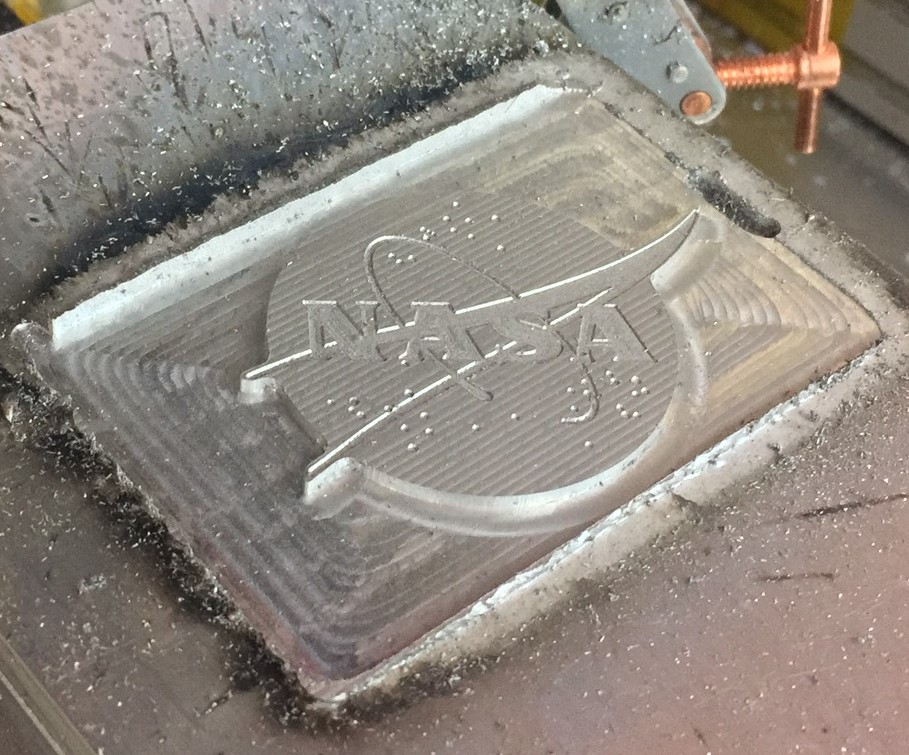Made In Space Wins NASA Contract for Next-Gen 'Vulcan' Manufacturing System

Made In Space just took another step toward constructing big, complex structures off Earth.
The California-based company, which built the two 3D printers aboard the International Space Station (ISS), just secured a NASA contract to continue developing its next-generation Vulcan manufacturing system.
Vulcan is designed to make products in the space environment using a variety of "feedstock" materials, including metal. The two ISS machines are restricted to polymer feedstocks, so Vulcan will mark a significant advance when it's up and running, Made In Space representatives said. [3D Printing in Space: A Photo Gallery]
"The Vulcan hybrid manufacturing system allows for flexible augmentation and creation of metallic components on demand with high precision," Mike Snyder, Made In Space chief engineer and principal investigator, said in a statement. "Vulcan is an efficient, safe capability that utilizes the minimum amount of resources during manufacturing processes."
The new contract is a Phase 2 Small Business Innovation Research (SBIR) award. Made In Space recently completed the work laid out under the company's Phase 1 SBIR contract for Vulcan, which Made In Space received last year.
When Vulcan is ready to go, Made In Space aims to demonstrate the technology on the ISS, showing Vulcan's potential usefulness for a variety of exploration missions.
"Vulcan can be important to logistical reduction necessary for long-term exploration," Snyder said. "The hybrid manufacturing system is a major step forward for efficient space operations, providing the ability to build essential components and assemblies in the space environment, where flying spare parts from Earth is otherwise not viable."
Get the Space.com Newsletter
Breaking space news, the latest updates on rocket launches, skywatching events and more!
Vulcan will be able to use more than 30 materials as feedstocks, including titanium, stainless steel, aluminum and a variety of plastic composites, Made In Space representatives said. The upgradeable system will employ 3D printing as well as standard "subtractive" techniques to machine the printed parts down to their final shapes. This will all be done robotically.
Made In Space is also working to develop other technologies and systems. For example, the company recently launched to the ISS a machine that makes a high-value optical fiber called ZBLAN, which is tough to make here on Earth. (Our planet's gravity induces tiny defects in the fiber.) The goal is to determine whether manufacturing ZBLAN in microgravity is viable and lucrative enough to merit doing so on a large scale. If so, Made In Space plans to ramp up production of the stuff and bring lots of it down to Earth for sale.
Made In Space is also working on a robotic construction system called Archinaut — basically, a spacecraft equipped with a highly capable robotic arm and 3D printer. If all goes according to plan, Archinaut will be able to build big, complex structures — such as space telescopes — off Earth, and also be capable of repairing and upgradig existing satellites. The system could be ready to go by the mid-2020s, NASA officials have said. (NASA has funded Archinaut development via a "tipping-point technologies" contract.)
Made In Space retains ownership of one of the 3D printers on the ISS, operating the machine as a commercial facility. The other 3D printer now belongs to NASA.
Follow Mike Wall on Twitter @michaeldwall and Google+. Follow us @Spacedotcom, Facebook or Google+. Originally published on Space.com.
Join our Space Forums to keep talking space on the latest missions, night sky and more! And if you have a news tip, correction or comment, let us know at: community@space.com.

Michael Wall is a Senior Space Writer with Space.com and joined the team in 2010. He primarily covers exoplanets, spaceflight and military space, but has been known to dabble in the space art beat. His book about the search for alien life, "Out There," was published on Nov. 13, 2018. Before becoming a science writer, Michael worked as a herpetologist and wildlife biologist. He has a Ph.D. in evolutionary biology from the University of Sydney, Australia, a bachelor's degree from the University of Arizona, and a graduate certificate in science writing from the University of California, Santa Cruz. To find out what his latest project is, you can follow Michael on Twitter.









